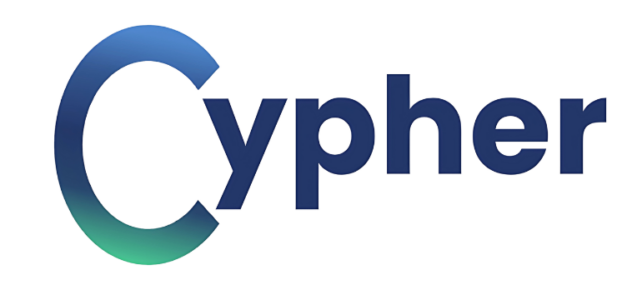
Cash flow management can make or break a startup. Let’s follow two SaaS startups, FlowBoost and RevenueLag, as they navigate their first year in business. Starting with the same product and funding, their decisions around cash flow strategies lead to very different outcomes. Along the way, we’ll explore the “why” behind smart cash flow management strategies and back it up with the numbers.
Starting Point: Both Companies at Zero
Both FlowBoost and RevenueLag start their journey with $100,000 in funding, a subscription product priced at $100/month, and a goal of hitting 1,000 customers within the first year.
|
Metric |
FlowBoost |
RevenueLag |
|
Starting Funds |
$100,000 |
$100,000 |
|
Monthly Subscription Price |
$100 |
$100 |
|
Year 1 Customer Goal |
1,000 |
1,000 |
The foundation is set. Now, let’s see how cash flow strategies play out.
Month 1: Choosing a Billing Model
Decision Time:
- FlowBoost offers customers annual billing with a 10% discount ($1,080/year instead of $1,200). This upfront payment boosts their cash reserves.
- RevenueLag opts for monthly billing, reasoning that customers may prefer smaller, ongoing payments.
Results:
- FlowBoost converts 20% of customers to annual plans, generating $216,000 in upfront revenue.
- RevenueLag starts slower, bringing in $20,000 from 200 customers on monthly plans.
Metric | FlowBoost | RevenueLag |
Billing Strategy | Annual billing (10% discount) | Monthly billing |
Revenue from 200 Customers | $216,000 upfront | $20,000 monthly |
Remaining Cash | $316,000 | $120,000 |
Takeaway:
FlowBoost now has a financial cushion to reinvest in customer acquisition and retention. RevenueLag, while steady, lacks the flexibility to scale aggressively.
Month 3: Customer Acquisition Costs (CAC)
Decision Time:
- FlowBoost prioritizes lowering CAC by automating their lead-nurturing process with email campaigns and personalized content. Their CAC drops to $40/customer.
- RevenueLag continues relying on expensive digital ads without optimizing their sales funnel, keeping CAC at $120/customer.
Results:
- FlowBoost acquires 400 new customers for $16,000.
- RevenueLag also gains 400 customers but spends $48,000 to do so.
|
Metric |
FlowBoost |
RevenueLag |
|
New Customers (Month 3) |
400 |
400 |
|
CAC |
$40 |
$120 |
|
Total Spend on Acquisition |
$16,000 |
$48,000 |
|
Remaining Cash |
$300,000 |
$92,000 |
Takeaway:
FlowBoost’s efficient acquisition strategies mean they’re growing while conserving cash. RevenueLag’s high acquisition costs are eating away at their runway.
Month 6: Retention and Churn
Decision Time:
- FlowBoost focuses on customer retention by offering a seamless onboarding process, proactive support, and personalized check-ins. Their churn rate drops to 5%.
- RevenueLag, lacking a clear retention strategy, experiences a churn rate of 20%, losing many of the customers they worked hard to acquire.
Results:
- FlowBoost retains 380 of their 400 customers and adds 200 more in Month 6.
- RevenueLag retains only 320 customers and adds 200 more, leaving them far behind.
|
Metric |
FlowBoost |
RevenueLag |
|
Churn Rate |
5% |
20% |
|
Retained Customers |
380 |
320 |
|
Total Customers (Month 6) |
580 |
520 |
|
Monthly Revenue |
$58,000 |
$52,000 |
Takeaway:
Retention is more cost-effective than acquisition. FlowBoost’s strategy keeps their customer base strong, while RevenueLag’s churn undermines their growth efforts.
Month 12: The Final Comparison
Decision Time:
- FlowBoost uses their strong cash flow to hire a small team, invest in product development, and scale their marketing. By Month 12, they’ve hit 1,000 customers, with 30% on annual plans.
- RevenueLag, constrained by cash flow and churn, ends the year with only 600 customers.
Results:
|
Metric |
FlowBoost |
RevenueLag |
|
Total Customers (Year 1) |
1,000 |
600 |
|
Annual Revenue |
$1,080,000 |
$720,000 |
|
Ending Cash Balance |
$450,000 |
$50,000 |
Takeaway:
FlowBoost’s smart cash flow strategies allowed them to reinvest in growth and scale effectively. RevenueLag, with no clear strategy, fell short of their goals.
What Founders Can Learn
FlowBoost’s success shows that cash flow management involves making many proactive decisions that build stability and growth potential:
- Offer Annual Billing: Upfront payments improve cash flow and allow for reinvestment.
- Lower CAC: Efficient acquisition strategies save money and extend runway.
- Focus on Retention: Keeping customers pays off more than constantly replacing them.
Managing cash flow doesn’t have to be overwhelming. At Cypher, we help SaaS startups create strategies that drive results—just like FlowBoost.
Build your empire. We’ll crunch the numbers.
